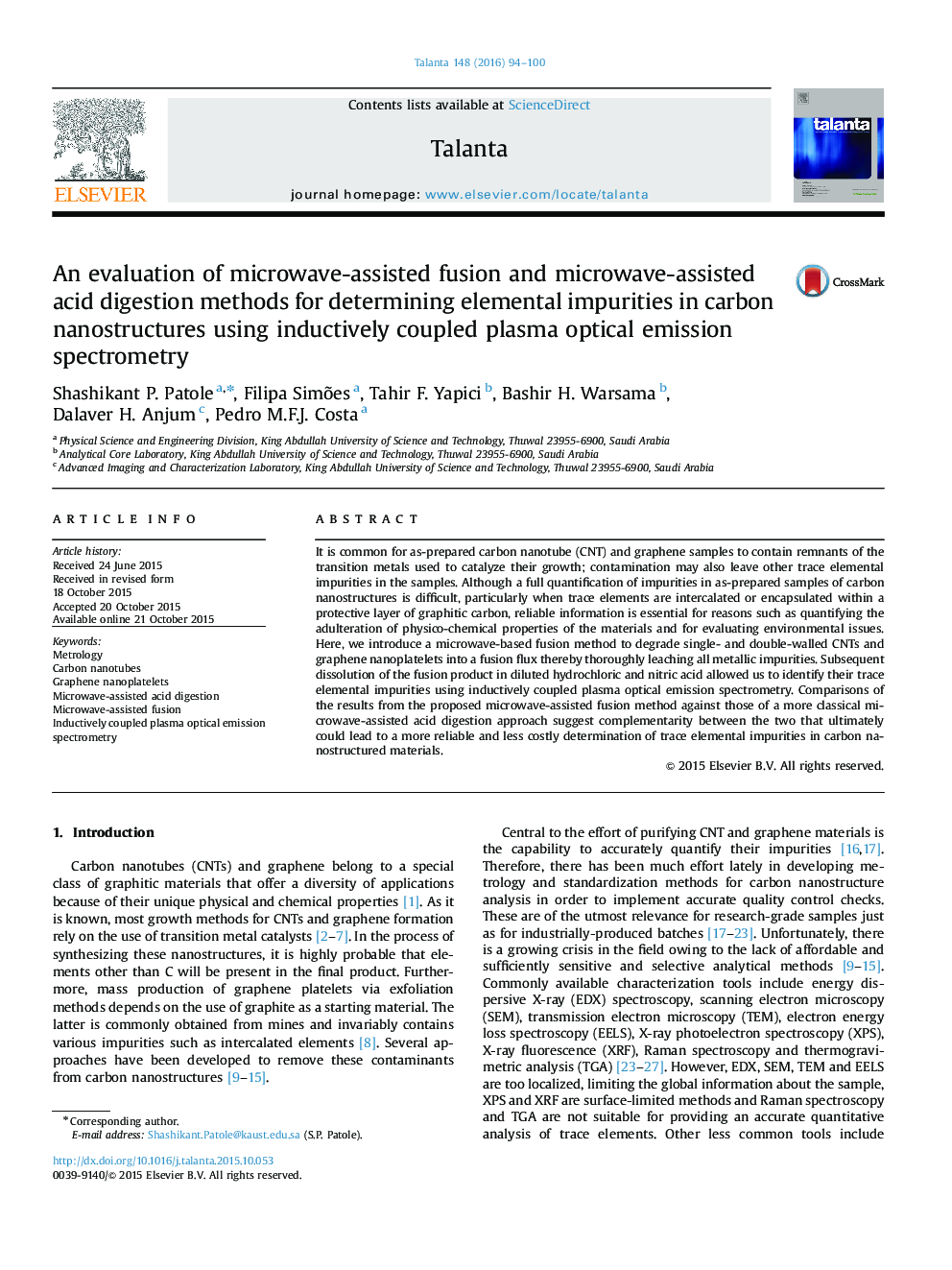| کد مقاله | کد نشریه | سال انتشار | مقاله انگلیسی | نسخه تمام متن |
|---|---|---|---|---|
| 1243763 | 1495787 | 2016 | 7 صفحه PDF | دانلود رایگان |
• Comparison of microwave-assisted fusion and acid digestions for carbon materials.
• Full digestion of various carbon nanostructures for identical fusion conditions.
• ICP-OES analysis suggests complementarity of fusion and acid digestions.
It is common for as-prepared carbon nanotube (CNT) and graphene samples to contain remnants of the transition metals used to catalyze their growth; contamination may also leave other trace elemental impurities in the samples. Although a full quantification of impurities in as-prepared samples of carbon nanostructures is difficult, particularly when trace elements are intercalated or encapsulated within a protective layer of graphitic carbon, reliable information is essential for reasons such as quantifying the adulteration of physico-chemical properties of the materials and for evaluating environmental issues. Here, we introduce a microwave-based fusion method to degrade single- and double-walled CNTs and graphene nanoplatelets into a fusion flux thereby thoroughly leaching all metallic impurities. Subsequent dissolution of the fusion product in diluted hydrochloric and nitric acid allowed us to identify their trace elemental impurities using inductively coupled plasma optical emission spectrometry. Comparisons of the results from the proposed microwave-assisted fusion method against those of a more classical microwave-assisted acid digestion approach suggest complementarity between the two that ultimately could lead to a more reliable and less costly determination of trace elemental impurities in carbon nanostructured materials.
A method for the complete digestion of carbon nanostructures has been demonstrated. Photographs (on the left side) show zirconium crucibles containing SWCNTs with flux of Na2CO3 and K2CO3, before and after microwave fusion; (on the right side) the appearance of the final solutions containing dissolved samples, from microwave-assisted fusion and microwave-assisted acid digestion. These solutions were used for determining the trace elemental impurities by ICP-OES.Figure optionsDownload as PowerPoint slide
Journal: Talanta - Volume 148, 1 February 2016, Pages 94–100
